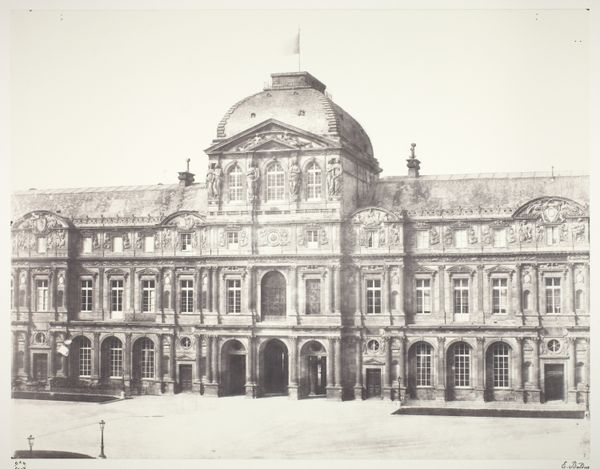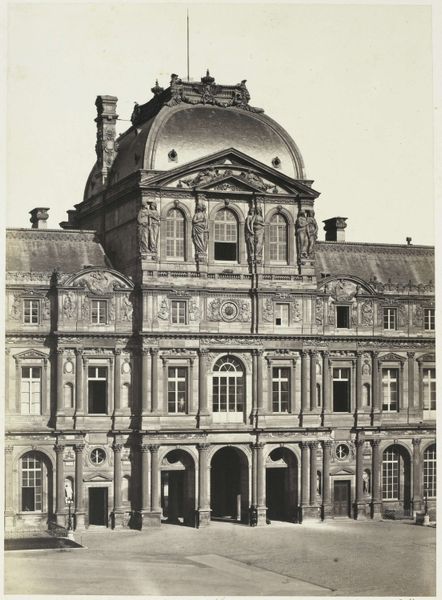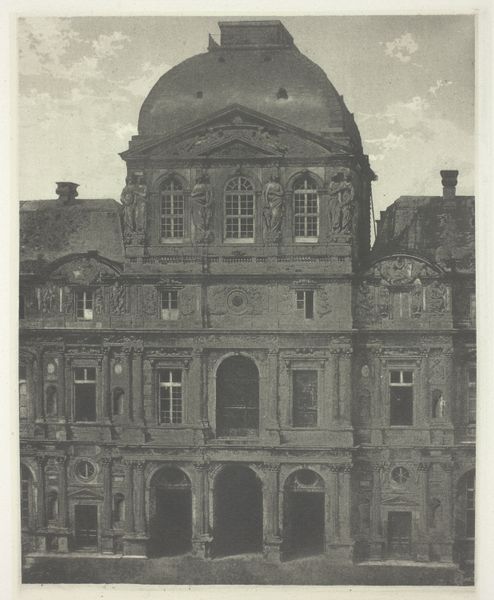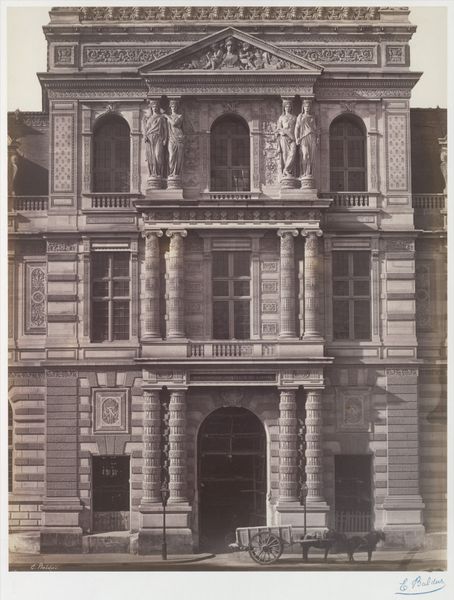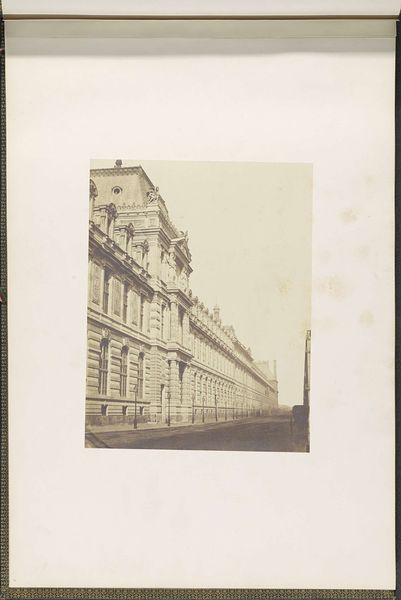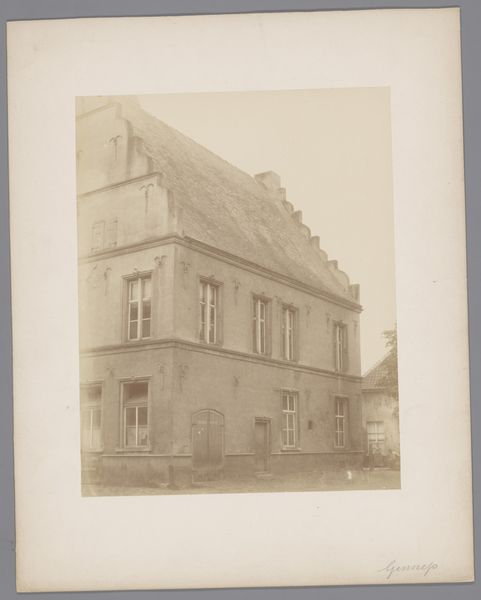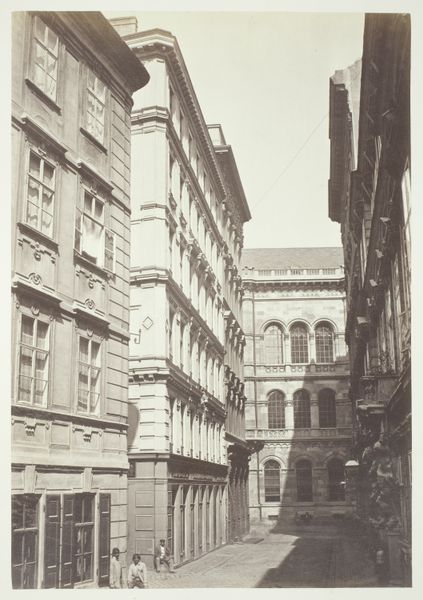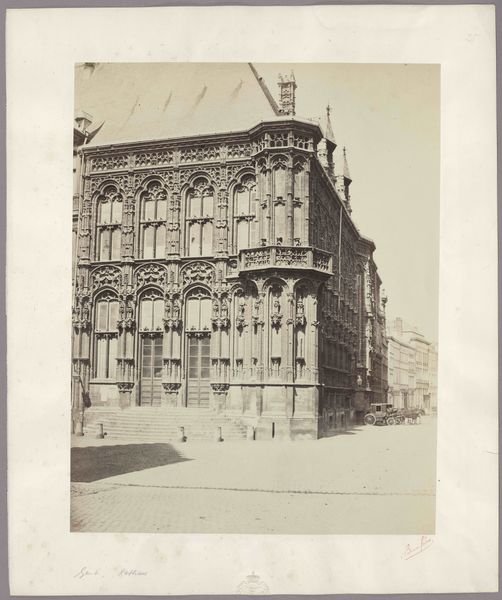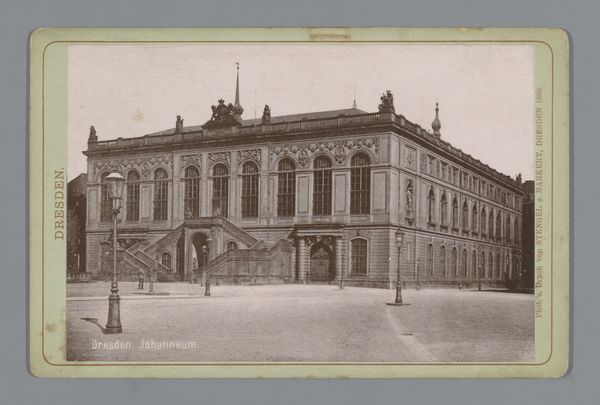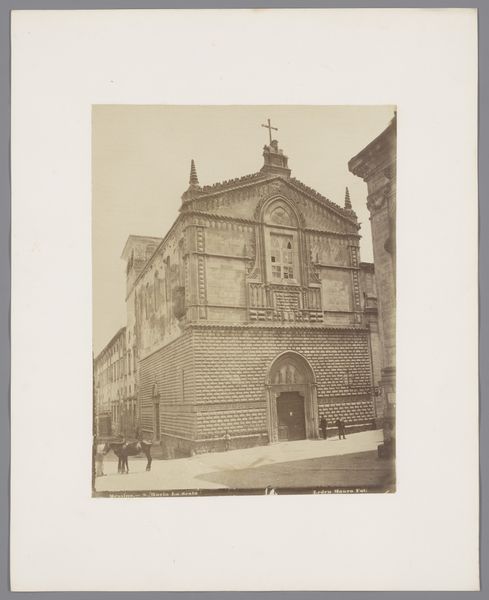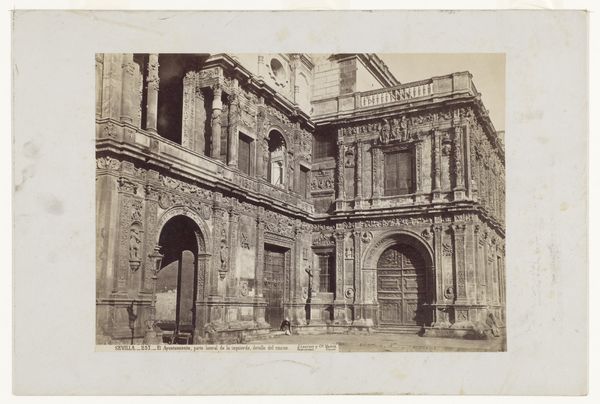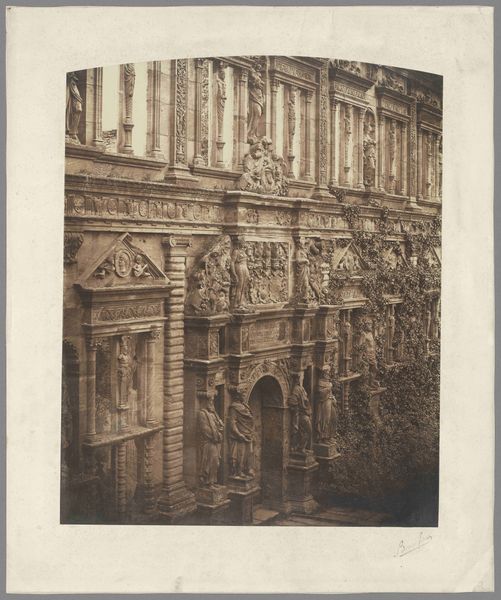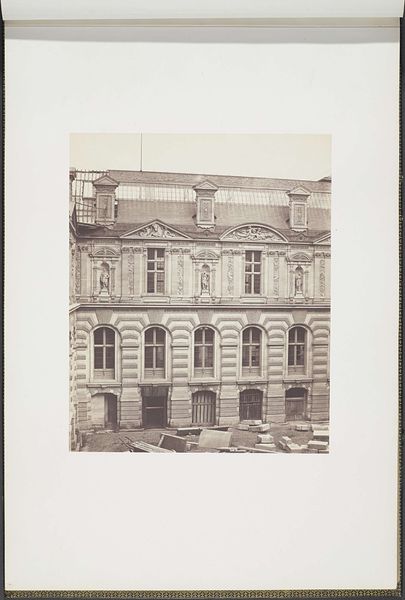
photography, architecture
#
neoclacissism
#
photography
#
19th century
#
cityscape
#
architecture
Dimensions: 39.5 x 27.7 cm. (15 9/16 x 10 15/16 in.)
Copyright: Public Domain
Editor: Here we have Edouard Baldus’s photograph, "Pavillon de l'Horloge, Louvre," taken between 1852 and 1853. The monochrome tones lend the structure a monumental air. What formal qualities strike you most powerfully in this composition? Curator: The geometry evident within this photographic representation holds significant interest. Baldus has skillfully captured the Louvre's facade. Note the proportional relationships between the architectural elements, particularly how the lower arcade supports the ornate upper stories, culminating in the hemispherical dome. Consider how light interacts with the texture of the stone; shadow and highlight articulate depth and volume. Do you perceive any tensions or harmonies within this arrangement? Editor: I see both, actually. There's harmony in the repeated shapes, the arches and windows, but tension in the contrast between the detailed carvings and the plainer surfaces. The lighting really emphasizes that contrast too. Curator: Precisely. This interplay is a manifestation of neo-classicism's visual vocabulary—a striving for balance through carefully calibrated opposition. How does Baldus manipulate the perspective and framing to emphasize this reading? Editor: It looks like he’s chosen a viewpoint that emphasizes the symmetrical composition and allows us to really appreciate all of its details and decorations. The framing leaves out extraneous visual information. Curator: Indeed. He concentrates the viewer’s focus upon the building's inherent order, creating a space that emphasizes structural elegance and the interplay of shapes. Have your perceptions shifted during this conversation? Editor: Absolutely! I was initially drawn to its simple grandeur. But now I am struck by the strategic design choices that create depth and visual interest in it. Curator: Analyzing formal elements grants us enhanced understanding and new depth of meaning. It’s a beneficial method to consider the intrinsic details of a composition, wouldn’t you agree?
Comments
No comments
Be the first to comment and join the conversation on the ultimate creative platform.
